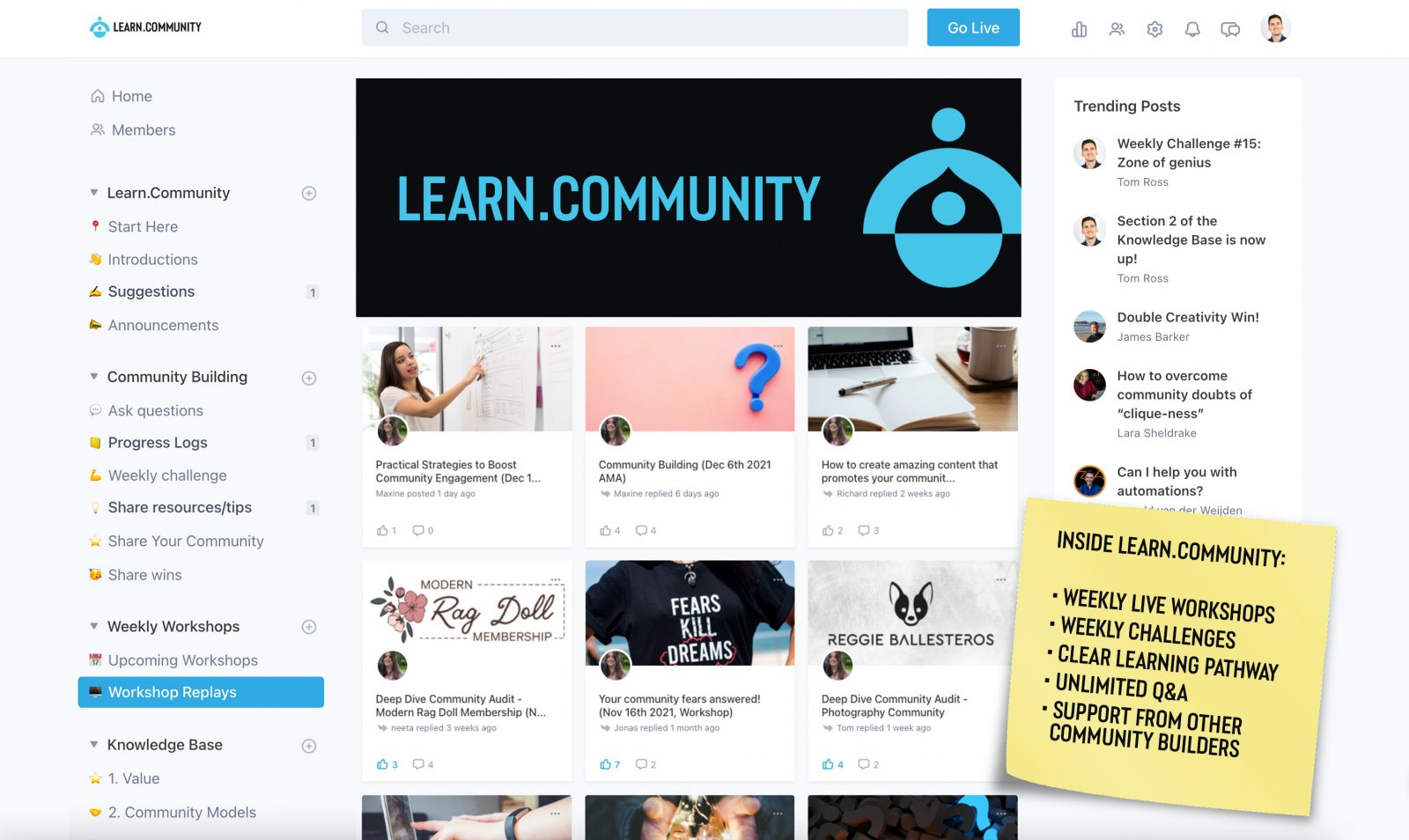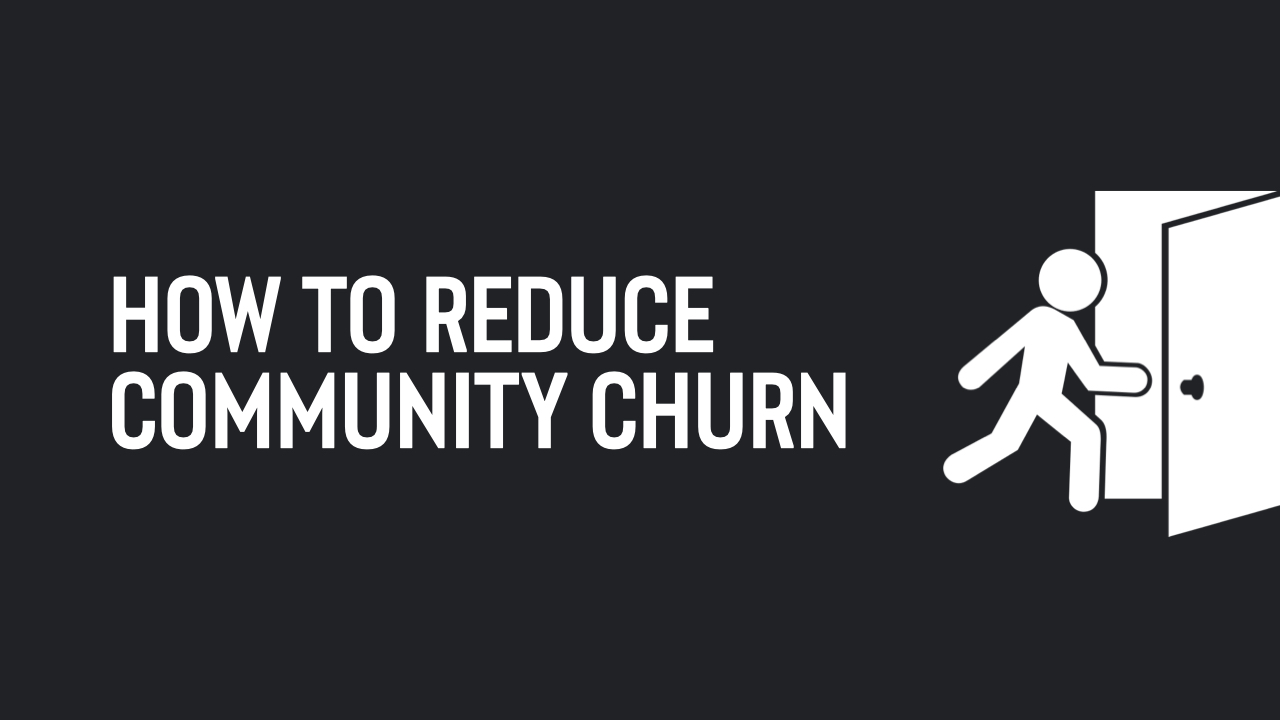
For the longest time I’ve been a fan of the closed community model rather than an open community. We opened our doors for Learn.Community every 2 months and each new cohort we hosted a super fun launch party for our new members on Zoom. It worked, it was amazing, it was definitely the best strategy! Right?
Turns out, maybe I was wrong…
We’ve totally pivoted our model to make Learn.Community a permanently open community. No more cohorts. No more applications. No more waitlists. This is the single biggest shift in our sign-up strategy since launch.
Today, I want to break down the reasoning behind this shift, and report on how it’s doing:
Controlling the quality of our members
In the early days of our community, I was OBSESSED that only the very best people would be able to join. We denied access to literally hundreds of applicants. We made applicants jump through endless hoops just to get into the community (yes, I realise how douchy that sounds).
Turns out all those steps just put up a ton of friction for everyone, including the right members.
A more effective strategy has been steadily increasing our membership price over time. This one act has meant that we’ve gone from denying the majority of applicants, to now rarely needing to say ‘no’ to any applicant.
We also refined our messaging and audited where we were marketing the community. Both of these things have attracted a consistently high quality of applicant.
Now we’re in a position where we’re super happy with the quality of applicants, it kind of renders the need for a complex application process obsolete.
Speaking of complex application processes…
Did I mention the TON of friction we were throwing up for all applicants?
Our application process had so many manual steps it was getting a little ridiculous.
We would notice that applicants who were very keen to join at one point, would often fall off the radar after jumping through tons of hoops and STILL having to wait 2 months for the next cohort to open. It all felt pretty arduous.
Not only was this work for each applicant, but for us too. My lovely wife Maxine who helps with this whole process was sending so many manual emails back and forth with applicants, it was proving to be a huge time suck.
Oh, did I mention she’s heavily pregnant? Definitely a good motivator for us to sort this process out!
Cohorts = engagement surges
Another thing I noticed is that cohorts would totally throw out our typical engagement patterns.
We’d go from predictable daily engagement to a sudden influx of new members, introduction threads, DMs and new posts. It sounds exciting, but really, this often resulted in an incredibly chaotic week every 2 months when we welcomed a new cohort.
The open community model means that we get more of a steady trickle. Not only is this more manageable, but it creates a healthier flow of engagement in the community, for us, and our members.
Automation is life
So I’m a total techphobe. I’ve resisted automations for the longest time as Zapier scares me.
However, there’s nothing like a pregnant wife to help you get over yourself and figure these things out.
I joined Jay Clouse’s awesome community and got some help setting up a range of automations.
It was reasonably involved, but our new onboarding flow is a THING OF BEAUTY. Seriously, it’s a really smooth experience for members to join, and alleviated literally 95% of my wife’s workload. More automation = more time with imminent baby.
When should you use a cohort model over an open community?
If you want to use a cohort model, don’t let me stop you. I hate one-size fits all advice, so this is just me sharing my experiences. However, I hope that this article has highlighted some benefits of an open community model.
Since the shift, we’ve benefitted from:
- A smoother sign-up experience for members
- A much more automated process overall
- A predictable level of community engagement (no more chaotic launch weeks)
- Avoiding potential members losing interest between cohorts
- Still maintaining a great quality of member
I would say that cohorts and waitlists are still amazing for an initial community launch. They let you validate demand ahead of launching. They let you launch with a bang. They’re definitely valuable.
But as an ongoing model, they just weren’t working for us anymore.
Don’t be afraid to challenge your current set-up. Mix things up, you never know, you may prefer it!
Join our private community for community builders
Connect with like-minded community builders and make real progress with your online community. Learn.Community offers an active forum, weekly workshops and a complete learning pathway.







